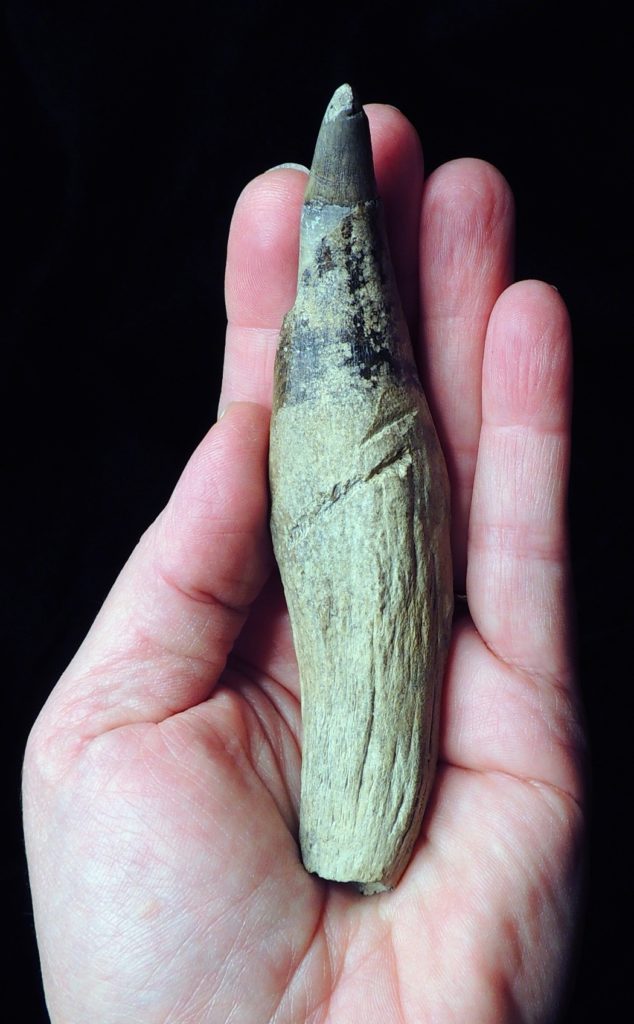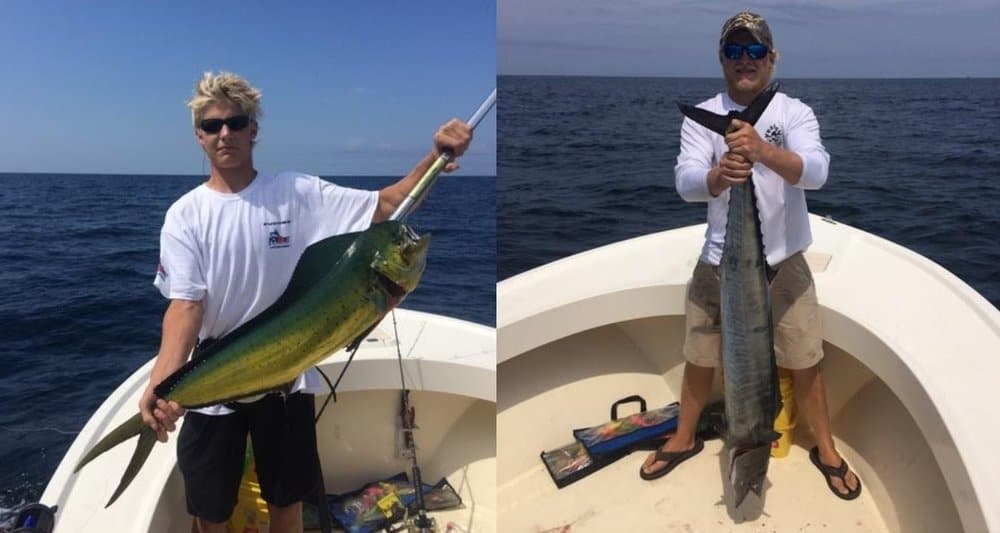A new discovery on an old whale tooth at the Calvert Marine Museum has paleontologists excited. The tooth contains bite marks that indicate a megalodon may have attacked the sperm whale. It’s the fist time bite marks from a prehistoric megatoothed shark has been found on another large predator like the sperm whale.
The late fossil enthusiast Norm Riker discovered the whale tooth in the Aurora Phosphate Mine in North Carolina. When he donated his fossil collection to the Calvert Marine Museum (CMM), Paleontology Collections Manager John Nance found the large shark bite marks on the tooth.

“I noticed the large sperm whale tooth while processing the thousands of fossils donated by Norm Riker,” said John Nance. “After picking up the tooth I saw the serrated scrapes on it and brought it to Stephen’s attention, realizing it was an important fossil.”
CMM Curator of Paleontology Dr. Stephen Godfrey agreed it was an important fossil. Nance’s find has since been published in the paleontology journal Acta Palaeontologica Polonica.
Godfrey says they can’t be sure whether the bite marks came from scavenging by the shark or an active predator attack. But they believe active predation is more likely, since “it would seem unlikely that a large shark would target the jaws of a floating or seafloor carcass of a sperm whale,” according to CMM. What’s more, the part of the tooth that was bitten was originally embedded in the sperm whale’s jaw. That suggests the shark would have first had to break through the whale’s jaw bone before leaving those marks on the tooth. The bite also most likely damaged the surrounding bone, showing how powerful the megatoothed shark’s bite could be.
The damage to the sperm whale’s head shows a similar predation pattern to that of a modern-day great white shark. Its bite marks are regularly found on the head of its prey, suggesting great whites focus on the head end of the body when attacking. The tooth may be anywhere from 6 million to 18 million years old.
Prehistoric bite traces by megatoothed sharks have now been found in all different parts of whale and dolphin skeletons, but scientists don’t know for sure if they attacked different types of prey using different strategies.
-Meg Walburn Viviano




